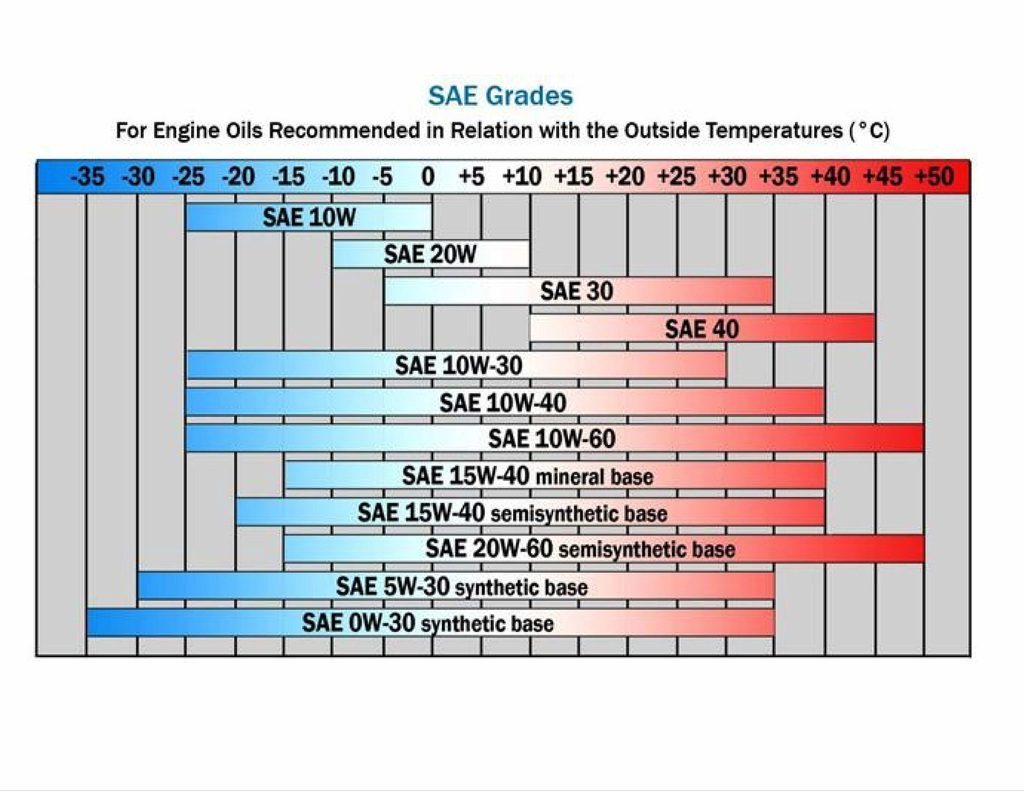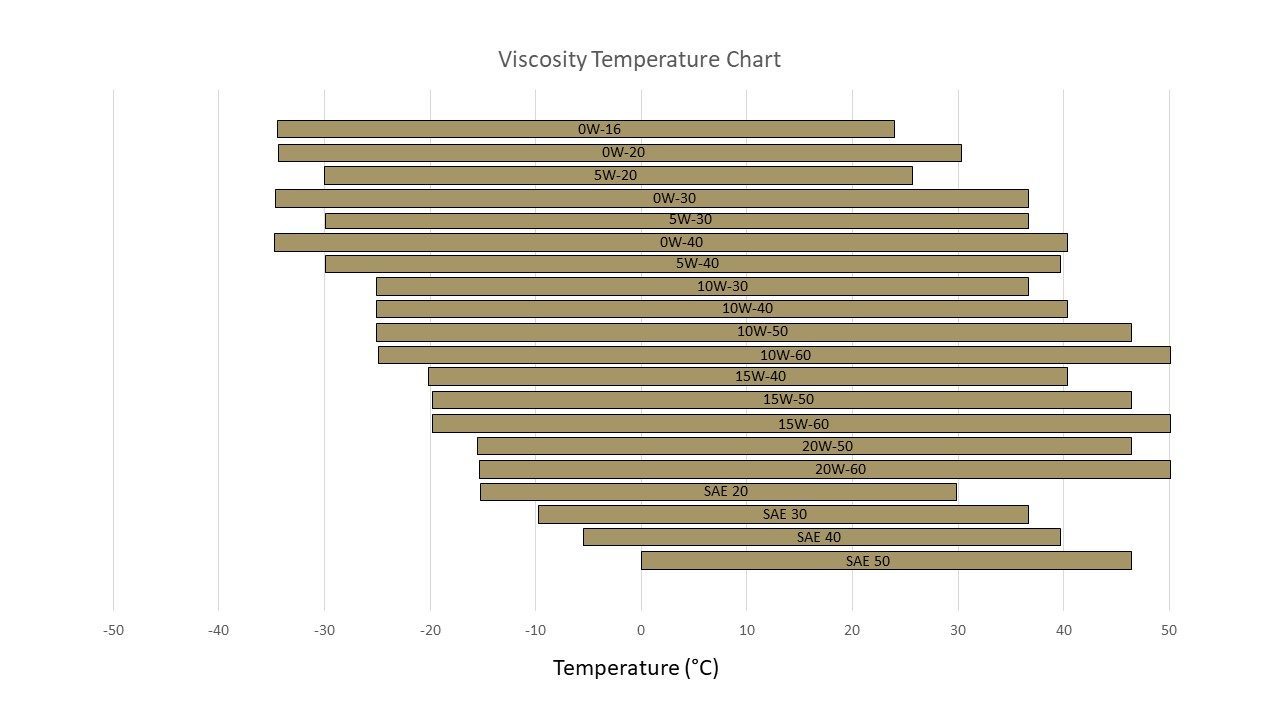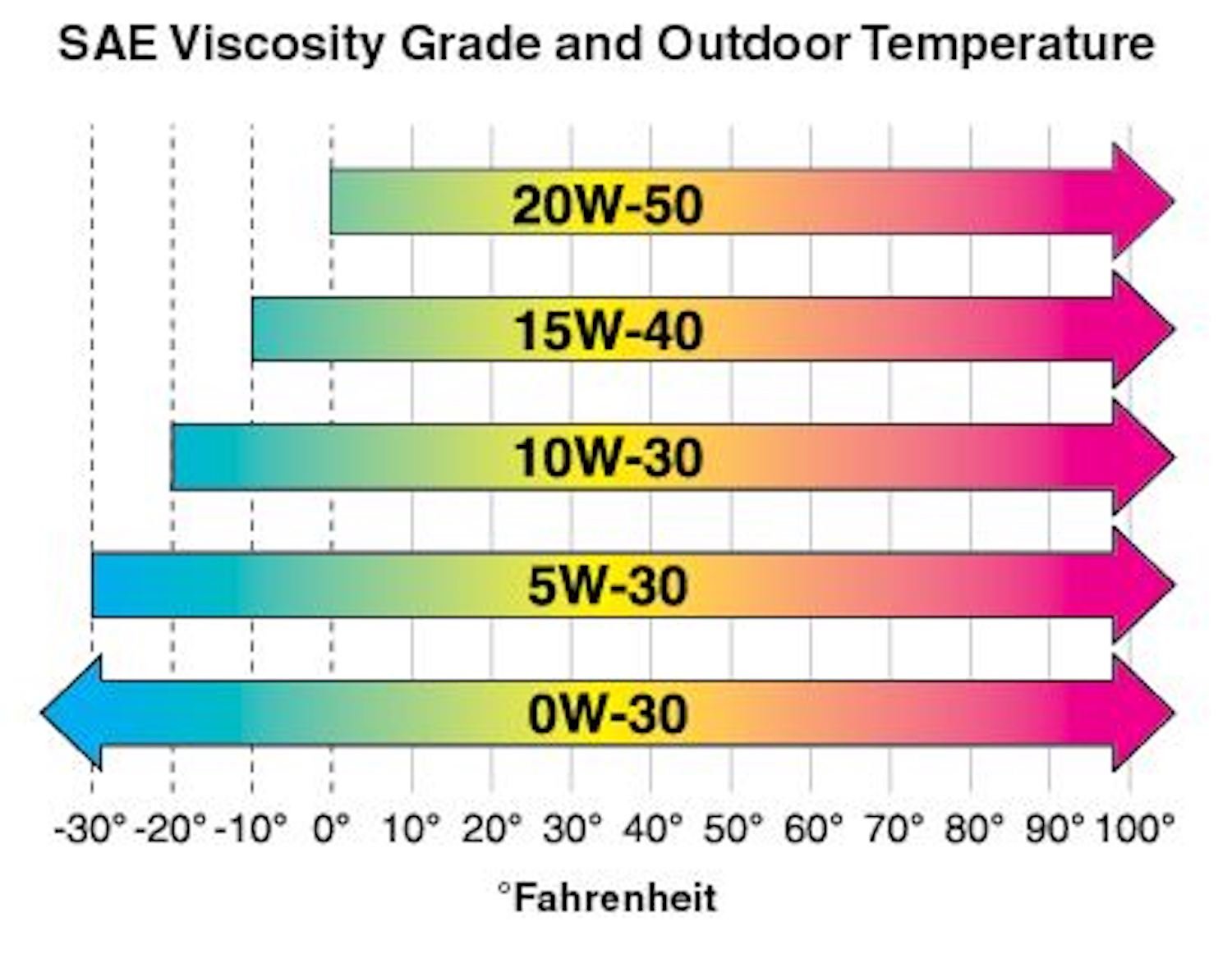Viscosities based on 96 vi single grade oils. Web the average temperature of engine oil is about 240°f on gasoline engines and 210°f on diesel engines. Web understand viscosity grades and the engine oil specification chart to ensure the right oil for your vehicle by following castrol's guide. Find out what oil viscosity you should use for your vehicle. Web when comparing 5w20 vs.
Viscosities based on 96 vi single grade oils. For example, they may specify a 0w30 synthetic or a 5w30 mineral oil. Web the viscosity of oil changes with temperature, therefore multigrade oils were developed to provide protection across a range of operating temperatures. Others may have a chart which gives recommendations based. Web when comparing 5w20 vs.
The sae (society of automotive engineers) scale shows the viscosity of oil at both hot and cold temperatures. Paulster2's link to motor oil university at bobistheoilguy is definitely a good reference for further reading on the subject. Web selecting the correct viscosity for an application requires knowing the operating temperature of the oil. Web observed engine oil temps of your vehicle in it's operational environment and a universal temp viscosity chart is where your detailed viscosity answers will lie. Web operating temperature of most modern car engines is ~90c (about the same to the thermostat opening temperature) and oil temperature in the sump will be around 10c less than that.
Proceed to select the recommended oil viscosity from the chart. Web when comparing 5w20 vs. Web when choosing an oil, consider the range of temperature your vehicle will be operated in before the next oil change. An oil that is 9.2 cst will be nearly the same viscosity as an oil that is 9.3 cst, yet one is an sae 20 and the other is an sae 30. Web dive into the world of oil viscosity ratings with an insightful oil viscosity chart. Web the average temperature of engine oil is about 240°f on gasoline engines and 210°f on diesel engines. 5w30 motor oil, the 20 indicates that the oil has a lower viscosity and is thinner at higher temperatures. Web with an oil temperature gauge, you can know your engine’s ideal oil temperature range. It shows, “how hot is too hot?” for your motor oil and tow vehicle’s transmission. Make sure to consult your owner’s manual to know when to get an oil change. Web the viscosity of oil changes with temperature, therefore multigrade oils were developed to provide protection across a range of operating temperatures. Web some owner’s manuals allow for different grades based on the predicted operating temperature. Web to choose the right lubricant for your vehicles, use the viscosity grade(s) recommended by the original equipment manufacturer (oem) for the life of the engine and especially during the engine's warranty period. In most cases operating temperatures of engines are above the temperatures in the table above. Therefore, when the oil is cold (e.g.
This Enables The 5W20 Motor Oil To Reach Engine Parts Quicker And Create Less Drag That Reduces Fuel Economy.
Web in the oil viscosity chart, you’ve got different viscosity grades in the middle and the corresponding kinematic viscosity and saybolt viscosity at two temperatures on the left and right, respectively. Web dive into the world of oil viscosity ratings with an insightful oil viscosity chart. If a programmer or the renowned scangaugeii will not read oil temp via the obdii port in your application, then you have to install a gauge and sender. Web with an oil temperature gauge, you can know your engine’s ideal oil temperature range.
Web Selecting The Correct Viscosity For An Application Requires Knowing The Operating Temperature Of The Oil.
In most cases operating temperatures of engines are above the temperatures in the table above. Proceed to select the recommended oil viscosity from the chart. Find out what oil viscosity you should use for your vehicle. 5w30 motor oil, the 20 indicates that the oil has a lower viscosity and is thinner at higher temperatures.
Web Find Viscosity Tables And Charts For Engine Oil At Multiple Temperatures (Viscosity And Density Values With Their Source).
Web the viscosity of oil changes with temperature, therefore multigrade oils were developed to provide protection across a range of operating temperatures. An oil that is 9.2 cst will be nearly the same viscosity as an oil that is 9.3 cst, yet one is an sae 20 and the other is an sae 30. Here is an interesting chart. Extreme heat can cause engine oil to deteriorate.
Web Give Your Engine Max Protection And Unlock Extra Power By Maintaining Proper Oil Temp.
Others may have a chart which gives recommendations based. Understand the viscosity scale developed by the api for optimal engine performance. Sae 90 to 250 and 20 to 50 specified at 100°c. Web to choose the right lubricant for your vehicles, use the viscosity grade(s) recommended by the original equipment manufacturer (oem) for the life of the engine and especially during the engine's warranty period.








